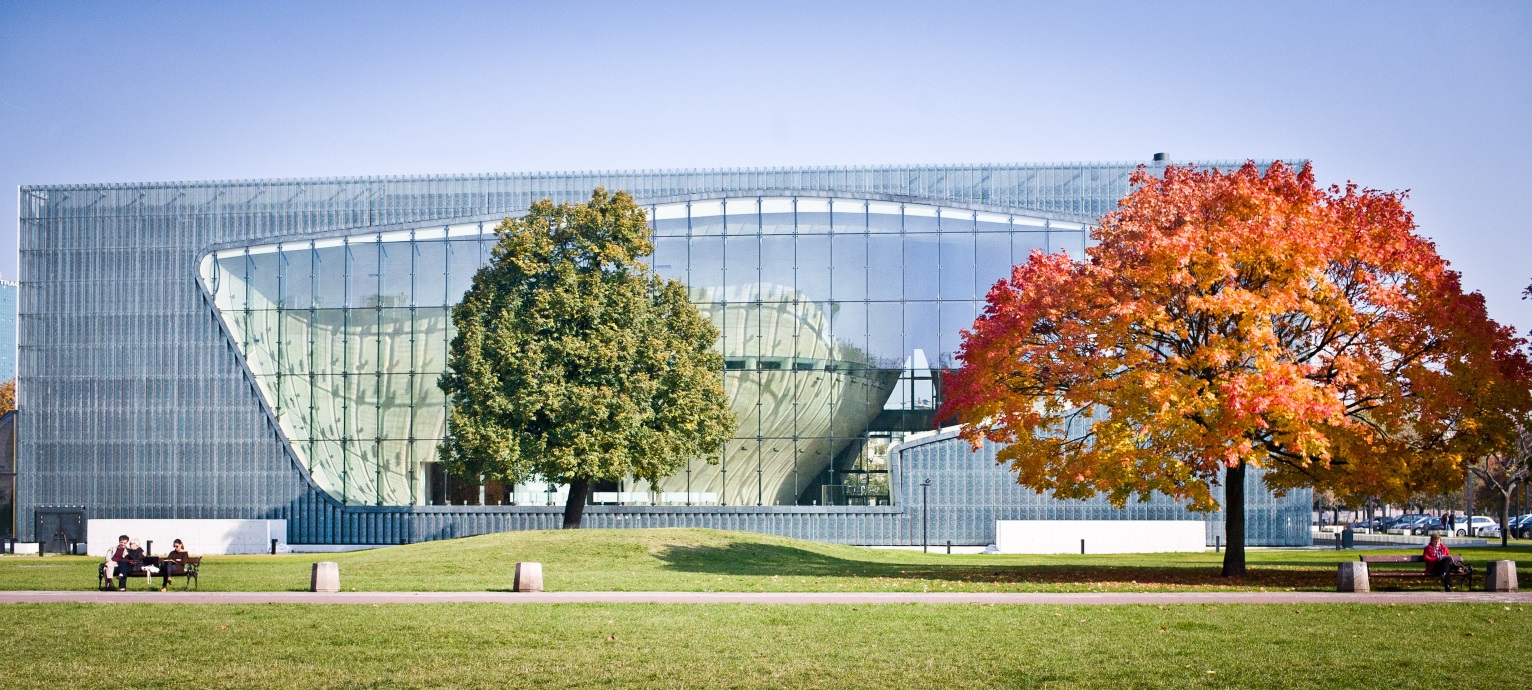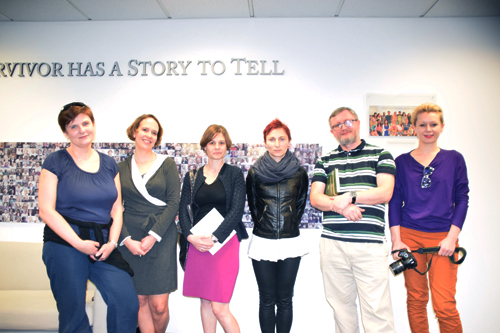POLIN Museum of the History of the Polish Jews Staff Visit USC Shoah Foundation


Three weeks ago, USC Shoah Foundation gathered in Poland to commemorate the 70th anniversary of the liberation of Auschwitz. And just last week, staff from the POLIN Museum of the History of Polish Jews returned the favor.
Along with Monika Koszyńska, USC Shoah Foundation liaison in Poland, a group of staff from the museum’s education department visited USC Shoah Foundation as part of its tour of museums in the San Francisco Bay Area and Los Angeles. POLIN just celebrated its grand opening in October 2014, though it began offering cultural and educational programming in April. It is a full access site of the Visual History Archive, and currently offers eight different activities for school groups that incorporate testimony.
POLIN Museum of the History of Polish Jews, in Warsaw, presents the history of a thousand years of Polish Jews from the Middle Ages up to the present. The core exhibition presents the narrative of this history through art installations, interactive exhibits, antique objects, paintings, video projections and more. Eight galleries cover themes including Forest, First Encounters, On the Jewish Street and Holocaust.
USC Shoah Foundation’s flagship professional development initiative, Teaching with Testimony in the 21st Century, has been held in Poland three times, twice at POLIN. A fourth session will be held later this year.
During their visit to California, the staff wanted to observe how different art and cultural museums operate and learn practices they can apply to POLIN. After their visit to USC Shoah Foundation, they hope to utilize the Visual History Archive in more activities and programming, and improve access to the archive throughout the museum.
The group also wanted to learn more about USC Shoah Foundation’s cataloging and indexing techniques, since it houses its own archives of oral histories and artifacts.
Koszyńska said POLIN’s goal is to see Jewish history better represented in the Polish national curriculum. People don’t always think of Jews as having been an integral part of Polish history for hundreds of years before World War II, she said, so they don’t understand why it’s important that they visit POLIN.
“The pre-war part of Polish history is the history of Polish Jews,” Koszynska said. “But first people have to be convinced to come.”
Learn more about Teaching with Testimony in the 21st Century at POLIN below: